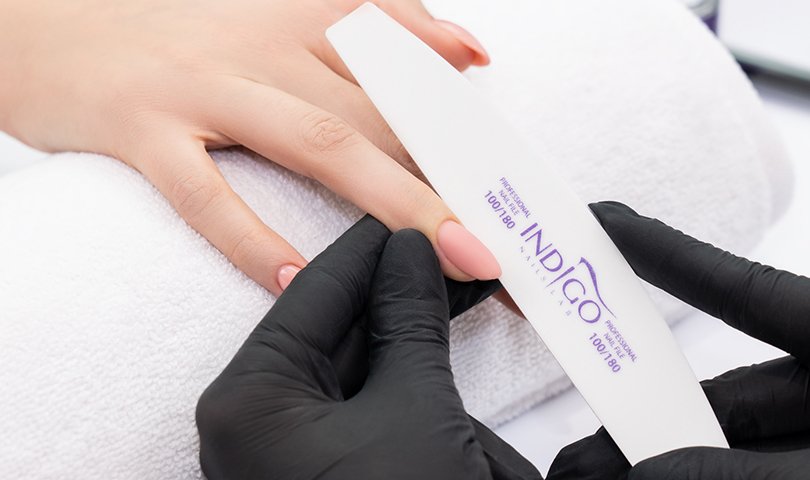
Among the various products for nail styling, there is a wide variety of files and buffers made from different materials, in a number of shapes, sizes and with different grits. We share some advice on choosing a reliable nail file, the right grit for the right task and steps in creating a manicure. Obviously, the right one will lay properly in the hand, be sturdy, will not emit any dust but most importantly will not harm cuticles and be safe for the nail plate.
Types of nail files
Older nail files, like the ones made out of metal, are used rarely out of fear of splitting and therefore damaging the nails. The sapphire and Teflon files are sturdy and durable but have failed for the very same reason. Glass files which have a slightly better opinion, are resistant to exploitation and easy to disinfect are recommended for home use – they work best with a natural nail plate and the risk of shattering makes it unsuitable to use in a professional nail salon. One of the most popular choices are paper files – available for a good price and more durable than ever thanks to new technologies. With an application of new generation of coating, Indigo Mylar files are ten times more resistant to grinding than standard files. They can't be harmed by water or disinfecting solutions – they can be used for a long time while meeting all required hygiene standards.
What do the numbers on nail files mean?
The numbers raging from 80 to 400 show the number of grains that fit onto a surface of 1 cm2. The rule is simple: the fewer grains, the coarser the nail file. The 80 grit is recommended for removing the hardest surface which is acrylic. The 100 is recommended for shortening and shaping elongated nails but it is not advised to use on a natural nail plate. The 180 – is considered a fine grit and can be used for touch-ups on elongated nails or for working on a natural nail plate. Higher grits, more delicate ones are for buffing and polishing – like levelling buffer 180/220 is recommended for precise levelling of the surface, and the 220/280 for creating shine. The highest index of 400 are buffers for polishing natural nails, recommended for Shea Butterm manicure and for creating a glossy surface on elongated nails.
What are the index numbers of the most popular nail files?
Among Indigo products the most popular file is Mylar 100/180. The two sides of this file can be used for most tasks performed by a nail file, that is why 100/180 grit is known to be the most versatile index, good for working with both natural nail (the 180 side) and the elongated nail (the 100 grit side). The 100/180 grit is also recommended for buffing the nail prior to using Gel Polish.
Nail files – which one to choose?
The regular shape of a wide, straight traditional nail file is universal because it can perform any task. Many people find the half-moon shape more comfortable, especially for precise filing near the cuticles.
Indigo Bestsellers – Mylar or Zebra?
Mylar file 100/180 is the most popular Indigo product among nail stylists and we know why, it doesn't create dust, doesn't separate and is long lasting because it is made from high-quality materials. Though they have the same grit index, Mylar is more gentle than Zebra, which in turn makes the work quicker. Zebra 100/180 is really sharp: it makes quick work of gel and acrylic more comfortable for an experienced stylist. Though the 100/180 grit is considered universal the Mylar file will be more suitable for a natural nail plate since the surface isn't as abrasive. Choosing the right nail file is a very individual matter – it's best to order one of every kind to test them before committing to buying a larger amount.
Published:
09.08.2018
Updated:
06.11.2023